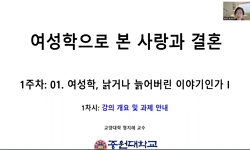Religious fasting during the late medieval period had several interesting features. First, practicing religious fasting was usually limited to women. Second, the rise in popularity of fasting coincided with the apostolic life movement, which emphasize...
http://chineseinput.net/에서 pinyin(병음)방식으로 중국어를 변환할 수 있습니다.
변환된 중국어를 복사하여 사용하시면 됩니다.
- 中文 을 입력하시려면 zhongwen을 입력하시고 space를누르시면됩니다.
- 北京 을 입력하시려면 beijing을 입력하시고 space를 누르시면 됩니다.
https://www.riss.kr/link?id=A100041179
- 저자
- 발행기관
- 학술지명
- 권호사항
-
발행연도
2014
-
작성언어
Korean
- 주제어
-
등재정보
KCI등재후보
-
자료형태
학술저널
-
수록면
109-132(24쪽)
-
KCI 피인용횟수
1
- 제공처
- 소장기관
-
0
상세조회 -
0
다운로드
부가정보
다국어 초록 (Multilingual Abstract)
Before thirteen centuries, fasting did not have the meaning of holy behavior. Fasting was understood as a penitential behavior or charity. However, in the late medieval period, just as living in poverty became a holy act, so did fasting. Extreme fasting of women became to express women’s apostolic life.
Religious fasting during the late medieval period had several interesting features. First, practicing religious fasting was usually limited to women. Second, the rise in popularity of fasting coincided with the apostolic life movement, which emphasizes severe poverty and nomadic preaching in urban areas. Third, fasting was typical among urban women- as a result of their exposure to the apostolic life movement. Many scholars do not research the cause of this phenomenon. Rudolf Bell elucidated it as an eating disorder provided by their religious culture with modern psychoanalytical theory. Caroline Walker Bynum explained this problem from a different perspective. According to Bynum, fasting combined with Eucharistic devotion were means of living an apostolic life. Around the late 12th centuries, there was a severe religious movement which emphasized the poverty and preaching, however women rarely had the right to renounce money or property and were not allowed to beg and preach. Women fasted as an expression of their religious piety.
Before thirteen centuries, fasting did not have the meaning of holy behavior. Fasting was understood as a penitential behavior or charity. However, in the late medieval period, just as living in poverty became a holy act, so did fasting. Extreme fasting of women became to express women’s apostolic life.
목차 (Table of Contents)
- 들어가는 말
- Ⅰ. 예비적 연구
- Ⅱ. 13세기 종교적인 상황
- Ⅲ. 여성과 성스러운 금식
- Ⅳ. 여성과 사도로서의 삶의 실천으로서 거룩한 금식
- 들어가는 말
- Ⅰ. 예비적 연구
- Ⅱ. 13세기 종교적인 상황
- Ⅲ. 여성과 성스러운 금식
- Ⅳ. 여성과 사도로서의 삶의 실천으로서 거룩한 금식
- 나오는 말
- Abstract
참고문헌 (Reference)
1 이필은, "중세 여성 종교운동에 대한 사제와 신학자들의 반응: 13세기 초에서 14세기 중엽까지 파리 베긴에 대한 신학자들의 태도 연구를 중심으로" 한국서양중세사학회 (22) : 126-154, 2008
2 Caroline Walker Bynum, "Women Mystics and Eucharistic Devotion in the Thirteenth Century" 2 : 196-206, 1984
3 Caroline Walker Bynum, "Women Mystics and Eucharistic Devotion in the Thirteen Century" 2 : 196-206, 1984
4 Alban Butler, "The Lives of the Fathers, Martyrs and Other Principle Saints. Vol. IV" D & J Sadlier & Company 1864
5 Raymond of Cpua, "The Life of Catherine de Siena" Glazier 105-107, 1980
6 L. Roper, "The Holy Household: Women and Morals in Reformation Augsburge" 1989
7 Andrew P. Roach, "The Devil's World: Heresy and Society 1100-1300" Pearson Education 114-120, 2005
8 Andrew P. Roach, "The Devil's World: Heresy and Society 1100-1300" Pearson Education 114-120, 2005
9 Thomas Aquinas, "Summa Theologica 2:2, 147"
10 Lester K. Little, "Religious Poverty and the Profit Economy in Medieval Europe" Cornell University Press 197-203, 1978
1 이필은, "중세 여성 종교운동에 대한 사제와 신학자들의 반응: 13세기 초에서 14세기 중엽까지 파리 베긴에 대한 신학자들의 태도 연구를 중심으로" 한국서양중세사학회 (22) : 126-154, 2008
2 Caroline Walker Bynum, "Women Mystics and Eucharistic Devotion in the Thirteenth Century" 2 : 196-206, 1984
3 Caroline Walker Bynum, "Women Mystics and Eucharistic Devotion in the Thirteen Century" 2 : 196-206, 1984
4 Alban Butler, "The Lives of the Fathers, Martyrs and Other Principle Saints. Vol. IV" D & J Sadlier & Company 1864
5 Raymond of Cpua, "The Life of Catherine de Siena" Glazier 105-107, 1980
6 L. Roper, "The Holy Household: Women and Morals in Reformation Augsburge" 1989
7 Andrew P. Roach, "The Devil's World: Heresy and Society 1100-1300" Pearson Education 114-120, 2005
8 Andrew P. Roach, "The Devil's World: Heresy and Society 1100-1300" Pearson Education 114-120, 2005
9 Thomas Aquinas, "Summa Theologica 2:2, 147"
10 Lester K. Little, "Religious Poverty and the Profit Economy in Medieval Europe" Cornell University Press 197-203, 1978
11 Lester K. Little, "Religious Poverty and the Profit Economy in Medieval Europe" Cornell University Press 1978
12 Herbert Grundmann, "Religious Movements in the Middle Ages" University of Notre Dame press 1995
13 Herbert Grundmann, "Religious Movements in the Middle Ages" University of Notre Dame Press 7-17, 1995
14 M. Aston, "Lollard Women Priests?" 31 : 441-461, 1980
15 Clare of Assis, "Lady: Early Documents" New City Press 2006
16 Rudolph M. Bell, "Holy Anorexia" University of Chicago 1987
17 Rudolf Bell, "Holy Anorexia" University of Chicago Press 1987
18 N. P. Tanner, "Heresey Trials in the Diocese of Norwich 1423-31" Camden Society 1977
19 John H. Barnhill, "Encyclopedia of World History: The Expanding World, 600 CE to 1450, vol II" Facts on File, Inc 2008
20 James L. Halverson, "Contesting Christendom" Rowman and Littlefield pub. 155-, 2008
21 Walter Simons, "Cities of Ladies: Beguines Communities in the Medieval Low Countries 1200-1565" University of Pennsylvania Press 2001
22 Burchard of Ursperg, "Bucardi et Cuonra야 Urspergensium Chronicon"
동일학술지(권/호) 다른 논문
-
- 효원사학회
- 김지영(Kim, Ji-Young)
- 2014
- KCI등재후보
-
Mediterranean Cultural Influences on the Northeast-Alpine Area in the Early Iron Age (750~600 BC)
- 효원사학회
- Sebastian Muller(세바스티안 뮐러)
- 2014
- KCI등재후보
-
17~18세기 해항도시 르아브르의 기능과 도시공간 변화
- 효원사학회
- 현재열(Hyun, Jae-Youl)
- 2014
- KCI등재후보
-
- 효원사학회
- 장세용(Jang, Se-Yong)
- 2014
- KCI등재후보
분석정보
인용정보 인용지수 설명보기
학술지 이력
| 연월일 | 이력구분 | 이력상세 | 등재구분 |
|---|---|---|---|
| 2027 | 평가예정 | 재인증평가 신청대상 (재인증) | |
| 2021-01-01 | 평가 | 등재학술지 유지 (재인증) |  |
| 2018-01-01 | 평가 | 등재학술지 유지 (등재유지) |  |
| 2015-01-01 | 평가 | 등재학술지 선정 (계속평가) |  |
| 2013-01-01 | 평가 | 등재후보 1차 FAIL (등재후보1차) |  |
| 2012-01-01 | 평가 | 등재후보학술지 유지 (기타) |  |
| 2010-01-01 | 평가 | 등재후보학술지 선정 (신규평가) |  |
학술지 인용정보
| 기준연도 | WOS-KCI 통합IF(2년) | KCIF(2년) | KCIF(3년) |
|---|---|---|---|
| 2016 | 0.86 | 0.86 | 0.7 |
| KCIF(4년) | KCIF(5년) | 중심성지수(3년) | 즉시성지수 |
| 0.68 | 0.64 | 1.22 | 0.06 |





 RISS
RISS DBpia
DBpia







